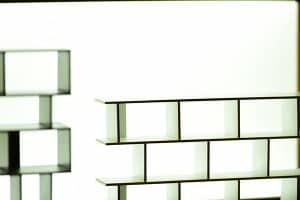Polish design comes back to IMM Cologne, one of the most important trade events in Europe. The exhibition is on display until 24 January 2016 in Cologne. Contemporary Lynx had a pleasure to talk to Anna Theiss – the curator of the Bright New: Polish Ideas Applied exhibition.
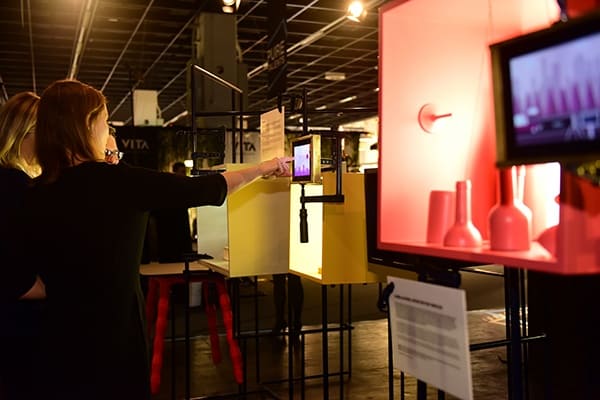
Bright New. Polish Ideas Applied IMM Cologne, photo by WPHI Kolonia
Sylwia Krasoń: Polish design returns to IMM Cologne. This time you do not present furniture, chairs, lamps or the classics of Polish design. The presentation focuses on projects based on new technologies applied to make our lives easier. Could you give us a better idea of what we can find at your stand at IMM Cologne?
Anna Theiss: I think we are in a situation in which, after years of hard and fruitful work on the part of a number of institutions, which surely includes the Adam Mickiewicz Institute (Culture.pl), Polish design has become a recognizable brand in the international arena. We know – we as Poles, and we as global consumers, that Polish design is lively, that a lot of good is happening, that great products are being created, that the furniture industry is flourishing. The “Bright New” exhibition is the next step in the discussion about Polish design thinking. It doesn’t present great tables and chairs that are being made in Poland. It presents a whole new level – “something more”, and this something is new and often intertwined with technological innovations.
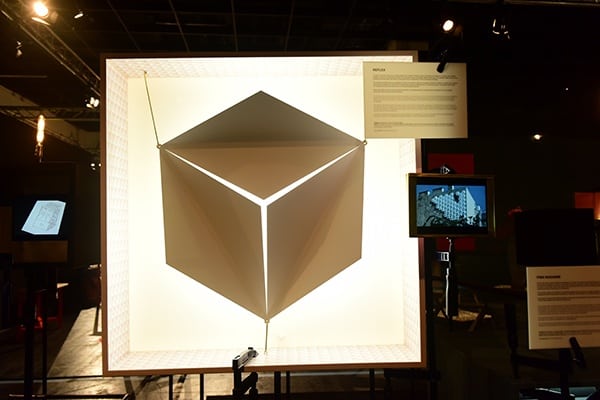
Bright New. Polish Ideas Applied IMM Cologne, photo by WPHI Kolonia
The “Bright New” exhibition is the next step in the discussion about Polish design thinking. It doesn’t present great tables and chairs that are being made in Poland. It presents a whole new level – “something more” and this something is new and often intertwined with technological innovations.
SK: How did you select designers for IMM Cologne?
AT: Our goal was to show a few different levels of technological innovation. The exhibition includes advanced technologies which enable the efficient or non-standard use of natural resources, such as a carp processing machine or the Reflex laser-cut reflective screens which brighten dark city alleys. It also shows products which are automatically associated with high-tech – such as Unique, a smart leather watch band or OORT intelligent home system. At the same time, another selection criterion of ours was wanting to show the design thought process through certain phases of the process of the creation of each project – hence, in one space, we are showing products which are at different stages of development. Some are commercial products, others are prototypes, others are design theses. Yet another method of selection: we were looking for designs which map cultural changes and transformations and tell the story of dynamic changes in Polish reality. Some objects are chosen to tell the story of change – for instance, the Kandelka lamp was designed for office spaces, but also gives off light conducive to relaxation, which, in my opinion, is a clear comment on the blurring of the division between work space and private space.
Bright New, Tylco, customizable furniture, Culture.pl
we were looking for designs which map cultural changes and transformations and tell the story of dynamic changes in Polish reality.
SK: In a press release, we can read that Bright New is not a typical design exhibition but a chance to see “ground-breaking Polish ideas as well as ground-breaking design solutions. What makes them ground-breaking?
AT: One of the central ideas behind our presentation is “breakthrough”. In the exhibition, we ask what makes an idea or a solution ground-breaking and simultaneously present a few answers to the question. They are the voices of design theorists, architects, sociologists. For instance, in a short video made for the exhibition, Magda Kochanowska argues that breakthrough design is design which has a social context and is rooted in certain values.
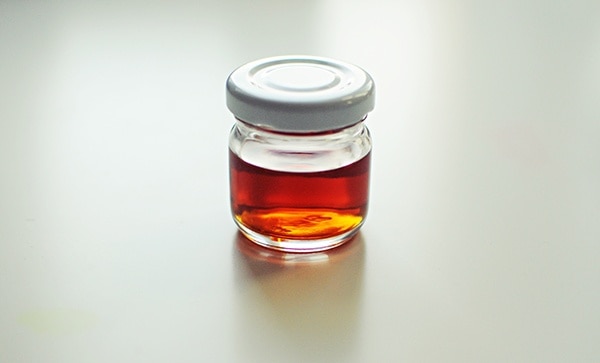
Germicidal cabbage concentrate Industrial Chemistry Research Institute, photo courtesy of Culture.pl
SK: IMM Cologne is one of the most significant design trade shows. What makes Polish designers stand out? What is unique about them?
AT: In my opinion, the distinguishing feature of Polish design is something that can be summarized by the word “gumption” – it’s a great flexibility, the ability to find ones way through narrow fields, and simultaneously the great ability to use local resources, which are not necessarily typically associated with innovation, technology or design, such as carp and cabbage – we have designs related to these resources on display at the exhibition.
[…] the distinguishing feature of Polish design is something that can be summarized by the word “gumption” – it’s a great flexibility, the ability to find ones way through narrow fields, and simultaneously the great ability to use local resources, which are not necessarily typically associated with innovation, technology or design, such as carp and cabbage […]
SK: What was the reaction of the international audience who visited the Polish stand ? What project was the most popular?
AT: We are aware that “Bright New” requires a viewer’s attention and analytical skills. But we are happy to see that the exhibition has been met with great interest – in Hall 4.2 and the Pure Talents section we have definitely had a record-breaking turnout. First, the visitors are drawn in by the unusual architecture of the exhibition and the contrasting lighting, only later are they drawn to specific exhibits. I think Reflex, the modular lighting system by Asia Piaścik, which brightens dark city alleys, is generating the most questions and enthusiasm at the moment. There are a lot comments on the concept of the exhibition as a whole and its inspirational aspect.
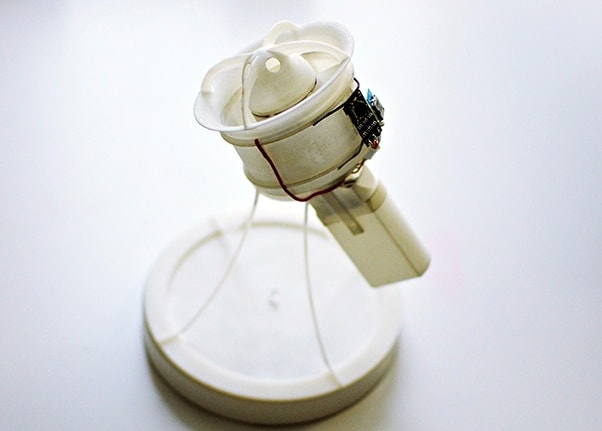
B-Droid artificial bee, Warsaw University of Technology, courtesy of Culture.pl
SK: What do you understand by innovation? Is it easy to spot great design based on new technologies? How to distinguish real innovative solutions from eye-catching gadgets?
AT: Innovation is something which genuinely responds to needs, provides actual solutions, or, like the Kandelka lamp – shows cultural changes deftly and poignantly. A gadget is a pure manifestation of technological possibilities. It’s worth noting that these are of course ideal descriptions – it is hard to come in contact with 100% innovation, without flirting with gadgetry.
SK: How to successfully launch a new design solution? What factors are needed to turn an idea into a useful, everyday design produced on larger scale?
AT: I think a good product is one that can be modeled and is constantly improving. In design, especially design which engages with new technologies, everything happens very quickly. It’s worth connecting on the web, sharing know-how and doing your homework well – like a thorough background check on other similar products which have already been created. Launching a product in Polish conditions doesn’t seem impossible; developing the product and the expansion of its production as well as sales on a larger scale may be a lot more complicated, due to the still limited culture of flexible development and improvement.
Kandelka Lamp, photo Culture.pl
Innovation is something which genuinely responds to needs, provides actual solutions, or, like the Kandelka lamp – shows cultural changes deftly and poignantly.
SK: Did you manage to visit other stands? What made the biggest impression on you, and what new trends did you discover?
AT: I have only had a chance to do a quick run-through. The thing that really caught my attention was the use of solid, natural wood so as to highlight the material itself. I think the brand Riva 1820 looks very impressive with their stunning wood-resin tables – the pieces feel seamless. It is a beautiful metaphor about technology taming nature. Also, some fragrance marketing and some great publications promoting Extremis.
SK: Thank you for a conversation
Curators: Katarzyna Białousz, Anna Theiss (Bold Projekt)
Exhibitors and exhibits
customizable furniture platform tylko./tylko.; the IMMU sleeve/Findustri; intelligent watch strap uBirds/uBirds; technology which connects your smartphone to your home OORT/OORT; the intelligent lamp Kandelka/Kandelka; B-Droid artificial bee/Warsaw University of Technology; Germicidal cabbage concentrate/Industrial Chemistry Research Institute; Fish Machine/Sea Fisheries Institute in Gdynia and Koszalin University of Technology; Laser alcohol detector for vehicles/Institute of Optoelectronics at the Military University of Technology in Warsaw; laser cut sun reflecting screen Reflex/Dingflux
Bright New. Polish Ideas Applied, January 18th-24th, 2016, IMM Cologne Pure Talents / Halle 4.2 / E – 012
Organizers: Culture.pl, Polish Institute in Düsseldorf, Trade and Investment Promotion Section of Consulate General of the Republic of Poland in Cologne

Bright New, Industrial Chemistry Research Institute, Germicidal cabbage concentrate, photo by WPHI Kolonia
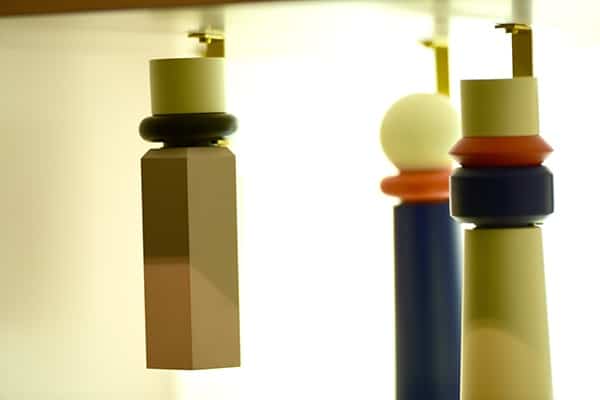
Bright New, tylko, pepper mills, photo Culture.pl








